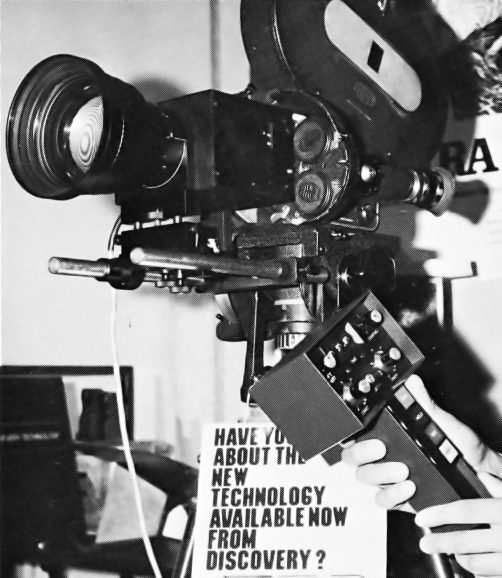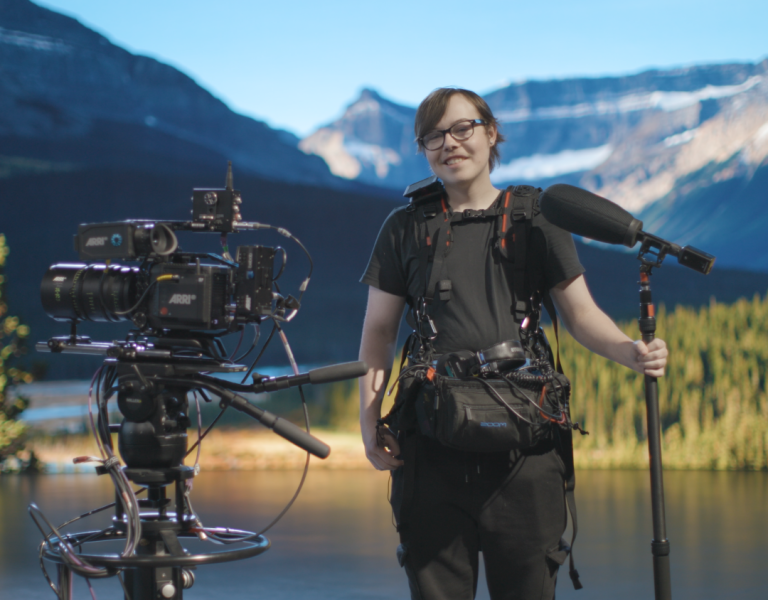THE GODFATHER OF ZOOM CONTROL
The opening of 1972’s The Godfather showcases the power of the zoom lens in a scene made possible by Tony Karp’s pioneering computerised controller.
The Godfather won three Academy Awards for Best Picture, Best Actor and Best Adapted Screenplay. The film could win a fourth next year, this time in the Academy’s Sci-Tech (Science and Technology) category for the computer-controlled zoom lens used to facilitate the movie’s famous opening sequence, among the greatest in cinema history. The scene and the technology that made it possible, designed by Tony Karp, are receiving renewed attention amid the general acclaim being given to Francis Ford Coppola’s gangster masterpiece.
The film opens in a darkened study, with the camera tightly focused on a man’s face. While he makes an impassioned appeal for justice to someone the audience cannot see, the camera zooms out very slowly to show more of the room and, ultimately, the back of the person to whom the man is speaking. The shot then cuts, revealing mob boss Don Corleone (Marlon Brando).
Coppola and cinematographer Gordon Willis ASC had originally intended not to use what they considered “contemporary mechanics” for the film, relying instead on a tableau style. They realised, however, that technology would have to be used to achieve Brando’s big introduction of Brando. How they arrived at Karp’s computer-controlled zoom, not even its inventor is certain: “I never met Coppola or Willis. I dealt with the CSC rental house in New York and suspect someone from there showed them this new technology. The only dealing I had with The Godfather crew was a request to make the zoom run even slower. It originally had an upper limit of 100 seconds, but a simple modification extended that to 300 seconds, which was long enough for the opening scene. The interface to the computer was so simple that the camera crew pretty much figured it out on their own. Coppola and Willis conceived that opening scene, which is a work of genius I never would have imagined.”

UNDER CONTROL
Karp began working on the zoom control computer in 1969, primarily to help a friend who was shooting TV commercials. “The timing is very precise on a commercial,” he explains. “A 30-second spot has to take exactly 30 seconds. For things like zoom moves, it was difficult – or impossible – to get the exact timing. I suggested controlling the zoom with a computer, not realising the complexity of what I was signing up for.”
In the late ‘60s, as Karp says, computers were massive – and massively expensive – pieces of equipment that had to be kept in specially cooled rooms. “I had read about them in science fiction magazines but there was no way to use one for my project,” he comments. “In the end, I designed an analogue computer that generated the precise curves to drive the zoom lens. Most computers are designed to be general purpose. My analogue computer was designed to solve just two very specific equations, which greatly simplified things.”
The zoom computer was completed in 1971, with Karp working under the banner of Discovery Technology, which he had founded two years before. The finished device weighed less than three ounces and was fitted to an Angénieux 25-250mm zoom lens. The system provided motor-control of the zoom function, with the ability to repeat moves exactly. Everything was controlled using a simple interface with very basic buttons and turn knobs. This set-up was also used on several TV commercials and the feature film Silent Running.
Around the same time, Karp and Discovery Technology produced another device for cinematography, a cine snorkel lens, before he left the company in 1972 “mainly for personal reasons”. His research and development continued, however, both as an independent and a contractor for high-profile customers, ranging from driver training simulators (1975) to a smartwatch with 30 display items on the face (2017).

LIFETIME OF INNOVATION
Karp agrees he has always been something of a “tinkerer”. Born just before the start of World War II, he grew up in New York City and enjoyed “building things”. In the 1950s he wrote a series of electronic project articles for Mechanix Illustrated magazine and also became interested in photography, which led to broadcaster NBC commissioning him to take still photographs of the TV shows in its 1959 autumn season. Karp has both OCD and dyslexia, which he says gives him, respectively, a “rocket-fuelled focus” and the ability to see patterns that others miss.
Of his creative and design process he says, “I start with an empty mind and as few biases and preconceptions as possible. Learning about something is always an adventure; you’ve got to be curious about things. The most important thing is to keep focused on the goal and maintain your vision. If you answer the philosophical questions first, the answers to the technical issues will follow.”
At the age of 83, Karp continues to tinker and invent. He restarted Discovery Technology in 2021 to design new cinematography equipment, including the CineSimulator for simulating advanced programmable gear. “Today’s cinematography equipment is like a giant à la carte buffet,” he comments. “There is no way to link things together to control them in a coherent way. Many things are done the same way they were 50 years ago – or can’t be done at all. The interface has to be simple and easy to use, which is what I did with my zoom control. This is an opportunity to extend the vocabulary of cinematography and add new camera moves and storytelling tools.”
With such a goal, it seems that a lifetime of tinkering is not over just yet.


















